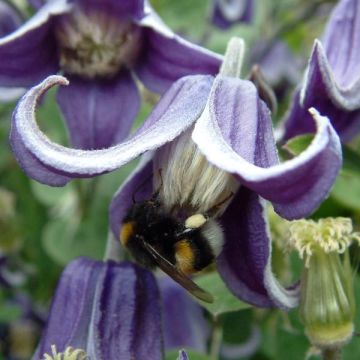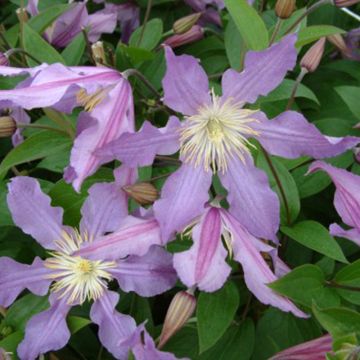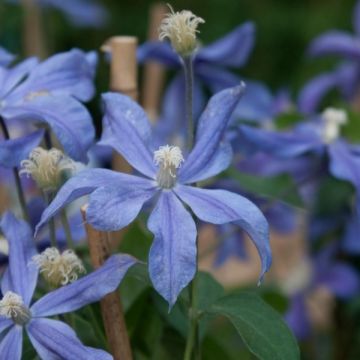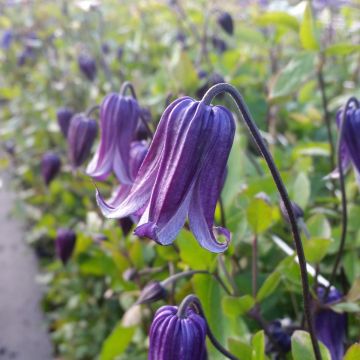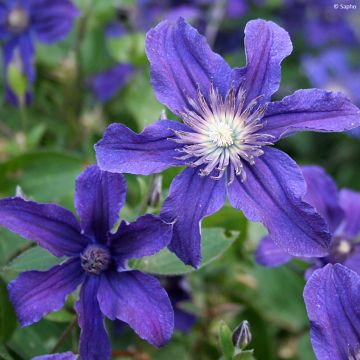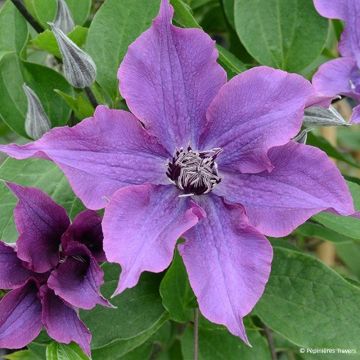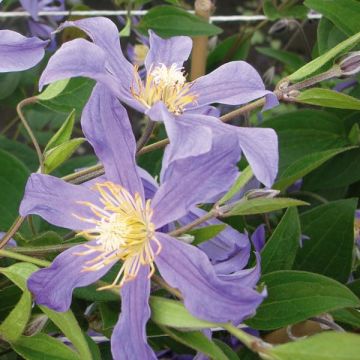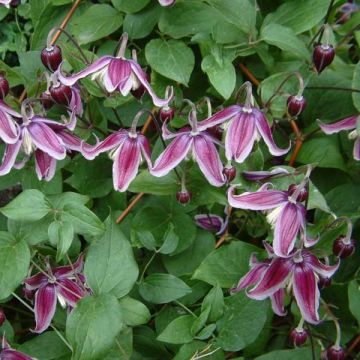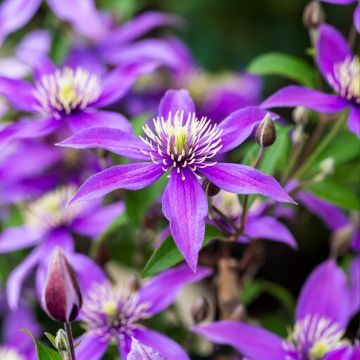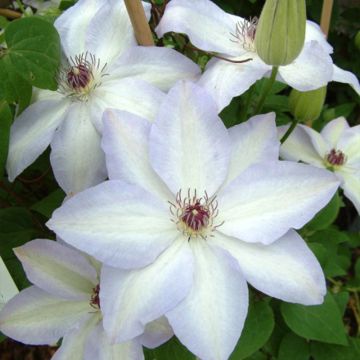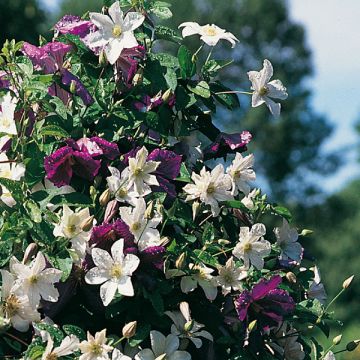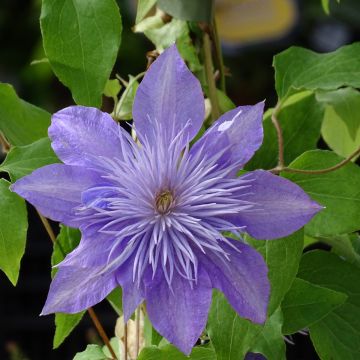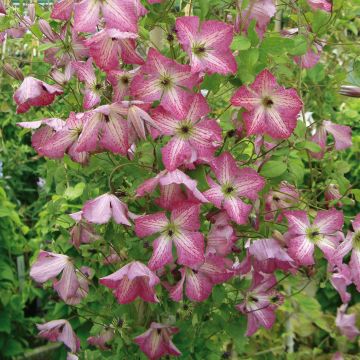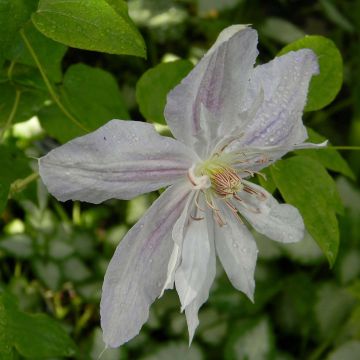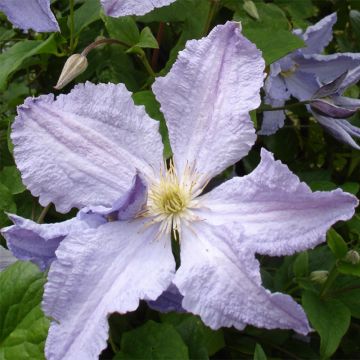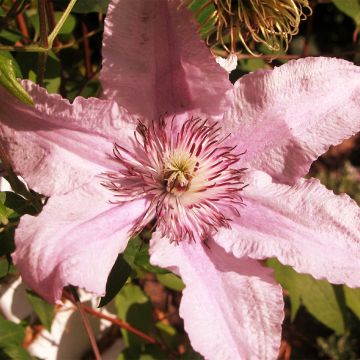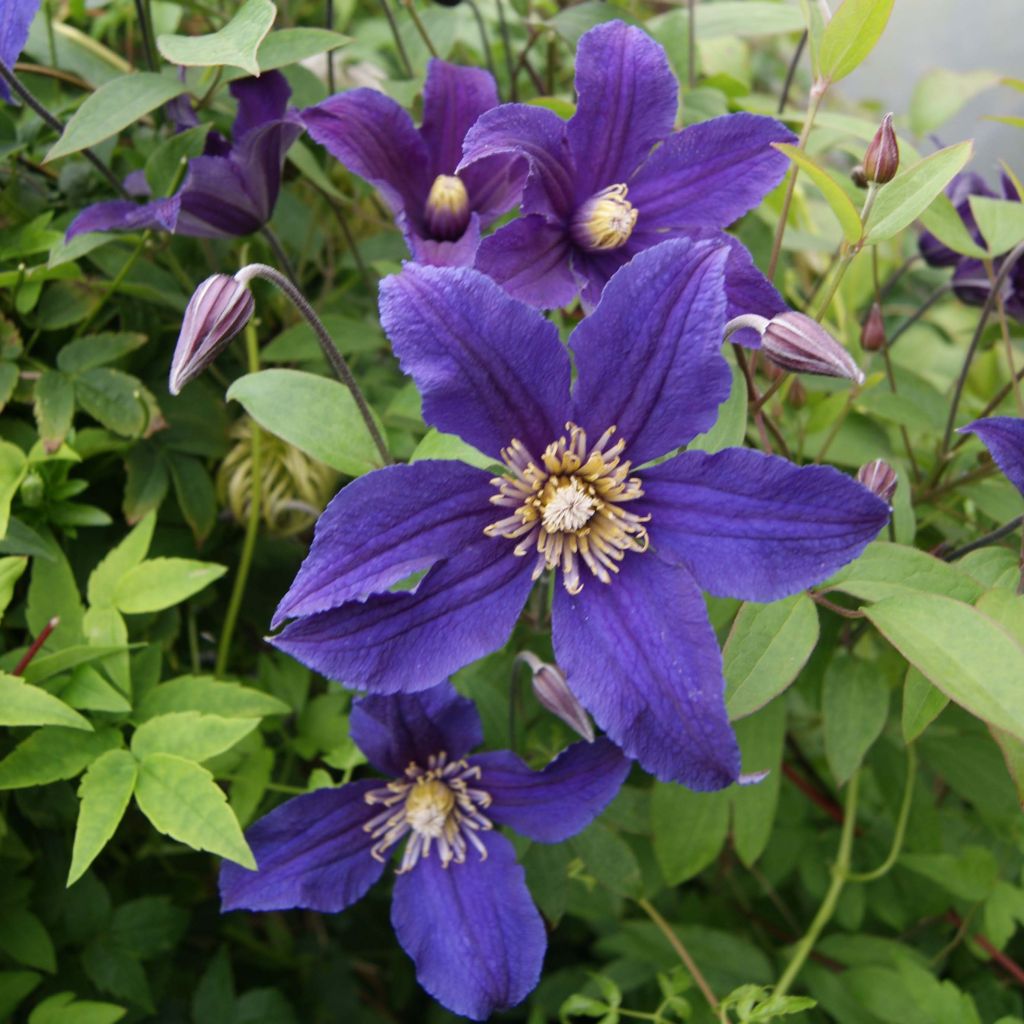

Clématite Hudson River
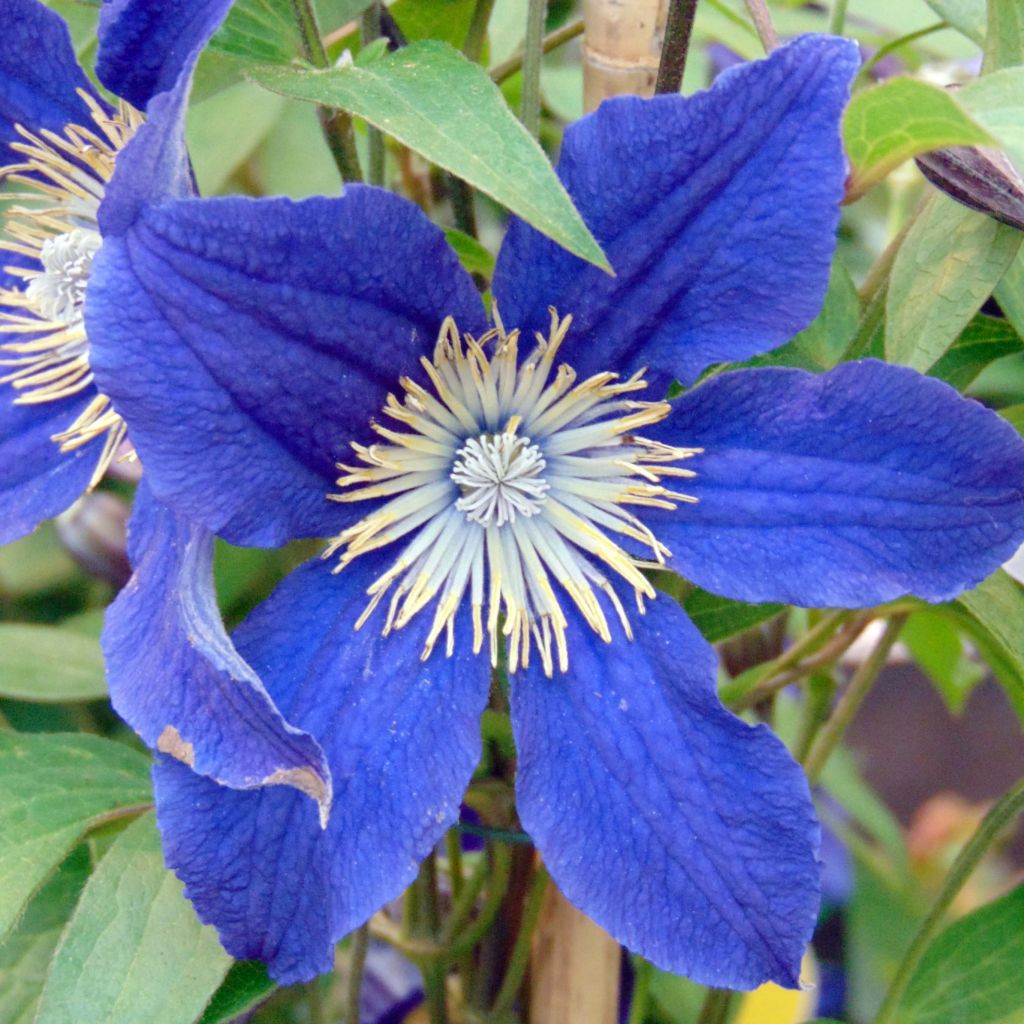

Clématite Hudson River
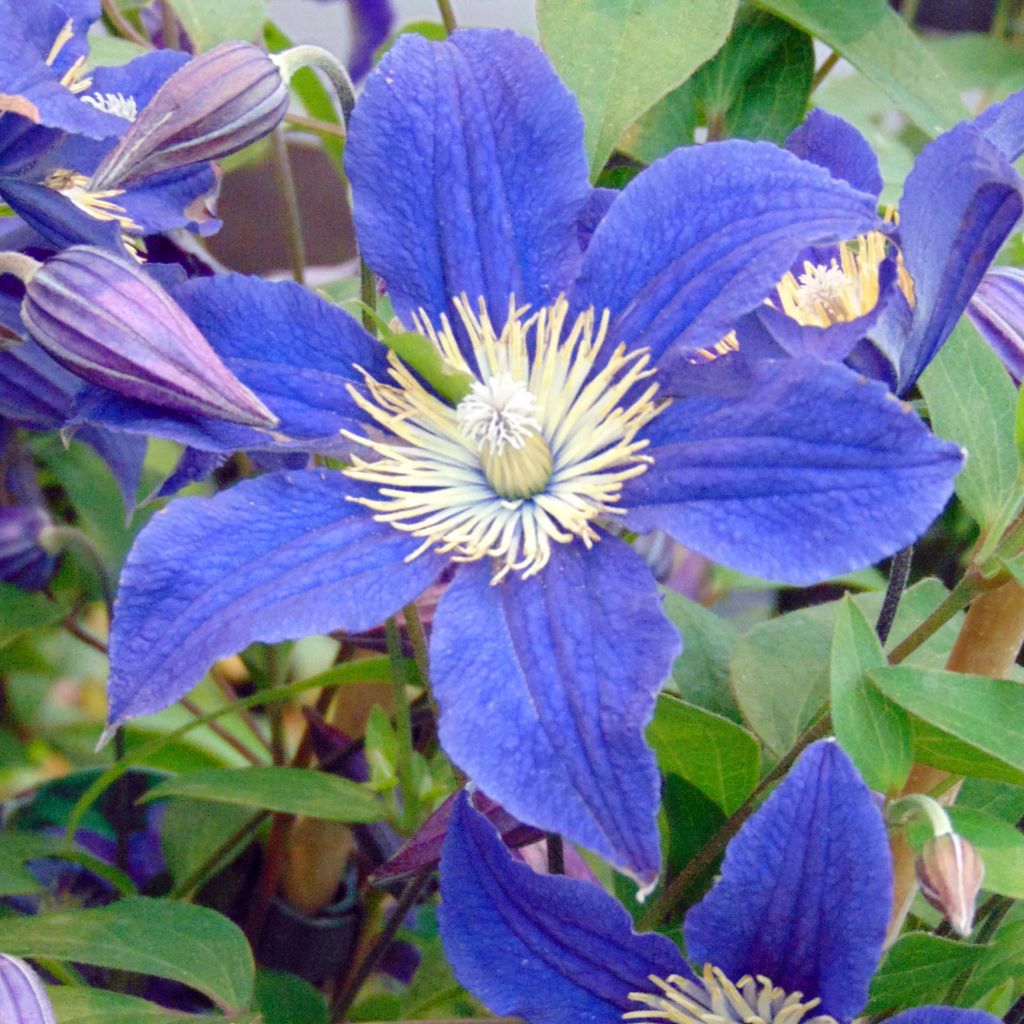

Clématite Hudson River
Clematis diversifolia Hudson River ®ZO 06137
Clematis diversifolia Hudson River ®ZO 06137
Vigorous plant with fast growth, covered in floral buds, very beautiful blue flowers.
Jérôme, 01/06/2023
This item cannot be shipped to the selected country
Delivery charge from €5.90
More information
Schedule delivery date,
and select date in basket
This plant carries a 6 months recovery warranty
More information
We guarantee the quality of our plants for a full growing cycle, and will replace at our expense any plant that fails to recover under normal climatic and planting conditions.
From €5.90 for pickup delivery and €6.90 for home delivery
Express home delivery from €8.90.

Does this plant fit my garden?
Set up your Plantfit profile →
Description
The Hudson River Clematis diversifolia will captivate the hearts of flower enthusiasts with its blue blooms from June to September. This recent Dutch hybrid is a delightful small semi-climbing plant that forms a somewhat bushy mass when allowed to grow freely. Its herbaceous stems bear single star-shaped flowers that gracefully curve. They are a deep blue-violet, with intensity highlighted by a beautiful cluster of light stamens. This variety of modest size thrives on old walls, trellises, fences, as well as ground cover at the base of trees. Its numerous voluble stems allow it to climb anywhere, as long as it can use its tendrils! Ideal when paired with a bush, in a container or not.
Clematis belong to the Ranunculaceae family. 'Hudson River' is a recent cultivar obtained in the Netherlands and introduced to the market in 2015. This plant is derived from Clematis diversifolia, a hybrid between C.integrifolia and various forms of C.viticella. It is a perennial herbaceous climbing plant that reaches a height of 1.50m (5ft), with a spread of 90 cm (35in) to 1m (3ft). Deciduous, it completely dries out every winter and regrows numerous stems from its stump in spring.
The flowers measure 5 to 8 cm (2 to 3in) in diameter, appearing on the year's shoots from the month of June to September, either solitary or grouped in clusters. These curious bell-shaped flowers are actually tubes made up of 4 sepals fused together at the base, quickly separating into four distinct, elongated, slightly upturned, deeply veined elements. They have a particularly deep indigo-blue to violet-blue hue. The flowering is followed by feathery fruits that persist until winter, which are decorative and silver-gray. The leaves, sometimes glabrous, are single and entire, lanceolate to cordate, fairly dark green. This clematis climbs using tendrils formed from transformed petioles.
The 'Hudson River' Clematis can be used as a perennial plant in rock gardens and mixed borders. It will be perfect for free use as a garland or in the branches of a late-flowering bush (lilac, mock orange, deutzia). It will also adorn balconies, as it thrives in containers where, like in the garden, it should be trained on a trellis. Pair it in the garden or in homemade bouquets with shrub roses or other pastel blooms, allowing you to create very romantic arrangements.
Report an error about the product description
Clematis diversifolia Hudson River ®ZO 06137 in pictures
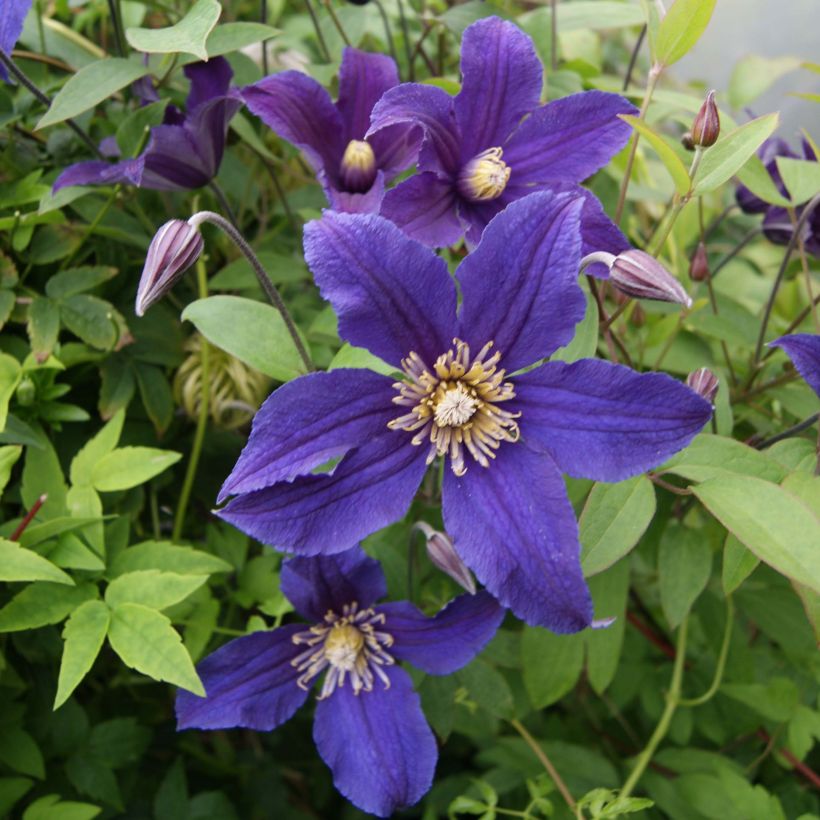

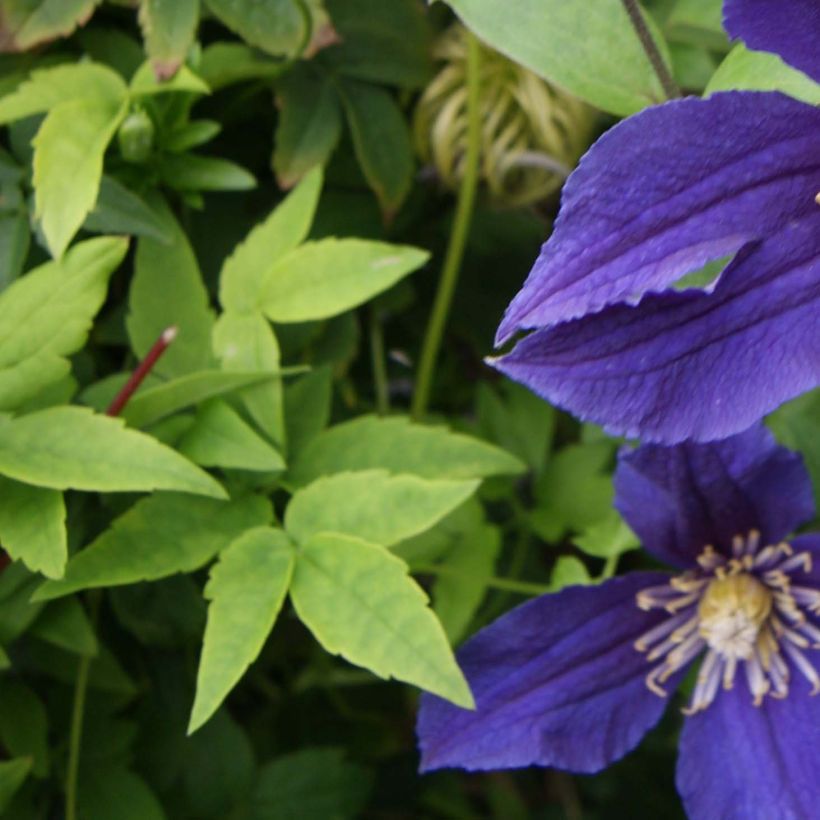

Plant habit
Flowering
Foliage
Botanical data
Clematis
diversifolia
Hudson River ®ZO 06137
Ranunculaceae
Cultivar or hybrid
Other Clematis Diversifolia
Planting and care
The diversifolia 'Hudson River' Clematis loves sunny exposures. As it blooms on the current year's branches, its vegetation should be pruned to 10 cm (4in) above the ground, above a nice pair of buds, at the end of winter (March), before the start of vegetation. Plant it in fertile, humus-rich, and well-drained soil, shading the roots and the base of the stem (with a flat tile, for example). Herbaceous species prefer full sun, but these plants like to keep their feet cool. However, they wilt in overly wet soil, so ensure good drainage. Plant your Clematis by covering the root ball with 3 cm (1in) of soil, in soil worked to a depth of 20 cm (8in), lightened with good compost and coarse sand. Water regularly during the first few weeks. Mulch all Clematis in February with garden compost or well-decomposed manure, avoiding direct contact with the stems. Cover the base of climbing Clematis with a small mound of soil, reducing the risk of wilting while promoting the growth of vigorous shoots from the stump.
After planting, cut back the stems of deciduous Clematis to about 20 cm (8in) above the base, above a nice pair of buds. We advise you not to overwater in winter, as stagnant water can cause fungus to develop at the neck. Train the stems, without squeezing them, until the plant can climb by itself.
Clematis also enjoys growing freely on neighboring plants. Voles and grey worms can attack Clematis and devour the stems. Aphids and greenhouse whiteflies are also potential parasites of Clematis.
Planting period
Intended location
Care
-
, onOrder confirmed
Reply from on Promesse de fleurs
Clematis
Haven't found what you were looking for?
Hardiness is the lowest winter temperature a plant can endure without suffering serious damage or even dying. However, hardiness is affected by location (a sheltered area, such as a patio), protection (winter cover) and soil type (hardiness is improved by well-drained soil).

Photo Sharing Terms & Conditions
In order to encourage gardeners to interact and share their experiences, Promesse de fleurs offers various media enabling content to be uploaded onto its Site - in particular via the ‘Photo sharing’ module.
The User agrees to refrain from:
- Posting any content that is illegal, prejudicial, insulting, racist, inciteful to hatred, revisionist, contrary to public decency, that infringes on privacy or on the privacy rights of third parties, in particular the publicity rights of persons and goods, intellectual property rights, or the right to privacy.
- Submitting content on behalf of a third party;
- Impersonate the identity of a third party and/or publish any personal information about a third party;
In general, the User undertakes to refrain from any unethical behaviour.
All Content (in particular text, comments, files, images, photos, videos, creative works, etc.), which may be subject to property or intellectual property rights, image or other private rights, shall remain the property of the User, subject to the limited rights granted by the terms of the licence granted by Promesse de fleurs as stated below. Users are at liberty to publish or not to publish such Content on the Site, notably via the ‘Photo Sharing’ facility, and accept that this Content shall be made public and freely accessible, notably on the Internet.
Users further acknowledge, undertake to have ,and guarantee that they hold all necessary rights and permissions to publish such material on the Site, in particular with regard to the legislation in force pertaining to any privacy, property, intellectual property, image, or contractual rights, or rights of any other nature. By publishing such Content on the Site, Users acknowledge accepting full liability as publishers of the Content within the meaning of the law, and grant Promesse de fleurs, free of charge, an inclusive, worldwide licence for the said Content for the entire duration of its publication, including all reproduction, representation, up/downloading, displaying, performing, transmission, and storage rights.
Users also grant permission for their name to be linked to the Content and accept that this link may not always be made available.
By engaging in posting material, Users consent to their Content becoming automatically accessible on the Internet, in particular on other sites and/or blogs and/or web pages of the Promesse de fleurs site, including in particular social pages and the Promesse de fleurs catalogue.
Users may secure the removal of entrusted content free of charge by issuing a simple request via our contact form.
The flowering period indicated on our website applies to countries and regions located in USDA zone 8 (France, the United Kingdom, Ireland, the Netherlands, etc.)
It will vary according to where you live:
- In zones 9 to 10 (Italy, Spain, Greece, etc.), flowering will occur about 2 to 4 weeks earlier.
- In zones 6 to 7 (Germany, Poland, Slovenia, and lower mountainous regions), flowering will be delayed by 2 to 3 weeks.
- In zone 5 (Central Europe, Scandinavia), blooming will be delayed by 3 to 5 weeks.
In temperate climates, pruning of spring-flowering shrubs (forsythia, spireas, etc.) should be done just after flowering.
Pruning of summer-flowering shrubs (Indian Lilac, Perovskia, etc.) can be done in winter or spring.
In cold regions as well as with frost-sensitive plants, avoid pruning too early when severe frosts may still occur.
The planting period indicated on our website applies to countries and regions located in USDA zone 8 (France, United Kingdom, Ireland, Netherlands).
It will vary according to where you live:
- In Mediterranean zones (Marseille, Madrid, Milan, etc.), autumn and winter are the best planting periods.
- In continental zones (Strasbourg, Munich, Vienna, etc.), delay planting by 2 to 3 weeks in spring and bring it forward by 2 to 4 weeks in autumn.
- In mountainous regions (the Alps, Pyrenees, Carpathians, etc.), it is best to plant in late spring (May-June) or late summer (August-September).
The harvesting period indicated on our website applies to countries and regions in USDA zone 8 (France, England, Ireland, the Netherlands).
In colder areas (Scandinavia, Poland, Austria...) fruit and vegetable harvests are likely to be delayed by 3-4 weeks.
In warmer areas (Italy, Spain, Greece, etc.), harvesting will probably take place earlier, depending on weather conditions.
The sowing periods indicated on our website apply to countries and regions within USDA Zone 8 (France, UK, Ireland, Netherlands).
In colder areas (Scandinavia, Poland, Austria...), delay any outdoor sowing by 3-4 weeks, or sow under glass.
In warmer climes (Italy, Spain, Greece, etc.), bring outdoor sowing forward by a few weeks.

































